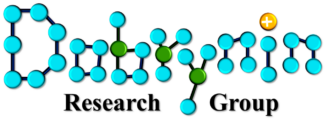Heyi Liang, Gary S. Grest, and Andrey V. Dobrynin
Dynamics of melts and solutions of high molecular weight polymers and biopolymers is controlled by topological constraints (entanglements) imposing a sliding chain motion along an effective confining tube. For linear chains, the tube size is determined by universal packing number Pe, the number of polymer strands within a confining tube that is required for chains to entangle. Here we show that in melts of brush-like (graft) polymers, consisting of linear chain backbones with grafted side chains, Pe is not a universal number and depends on the molecular architecture. In particular, we use coarse-grained molecular dynamics simulations to demonstrate that the packing number is a nonmonotonic function of the ratio Rnsc/Rng of the size of the side chains Rnsc to that of the backbone spacer between neighboring grafting points Rng. This parameter characterizes the degree of mutual interpenetration between side chains of the same macromolecule. We show that Pe of brush-like polymers first decreases with increasing side chain grafting density in the dilute side chain regime (Rnsc < Rng), then begins to increase in the regime of overlapping side chains (Rnsc > Rng), approaching the value for linear chains in the limit of densely grafted side chains. This dependence of the packing number reflects a crossover from chain-like entanglements in systems with loosely grafted side chains (comb-like polymers) to entanglements between flexible filaments (bottlebrush-like polymers). Our simulation results are in agreement with the experimental data for the dependence of a plateau modulus on the molecular architecture of graft poly(n-butyl acrylates) and poly(norbornene)-graft-poly(lactide) melts.

